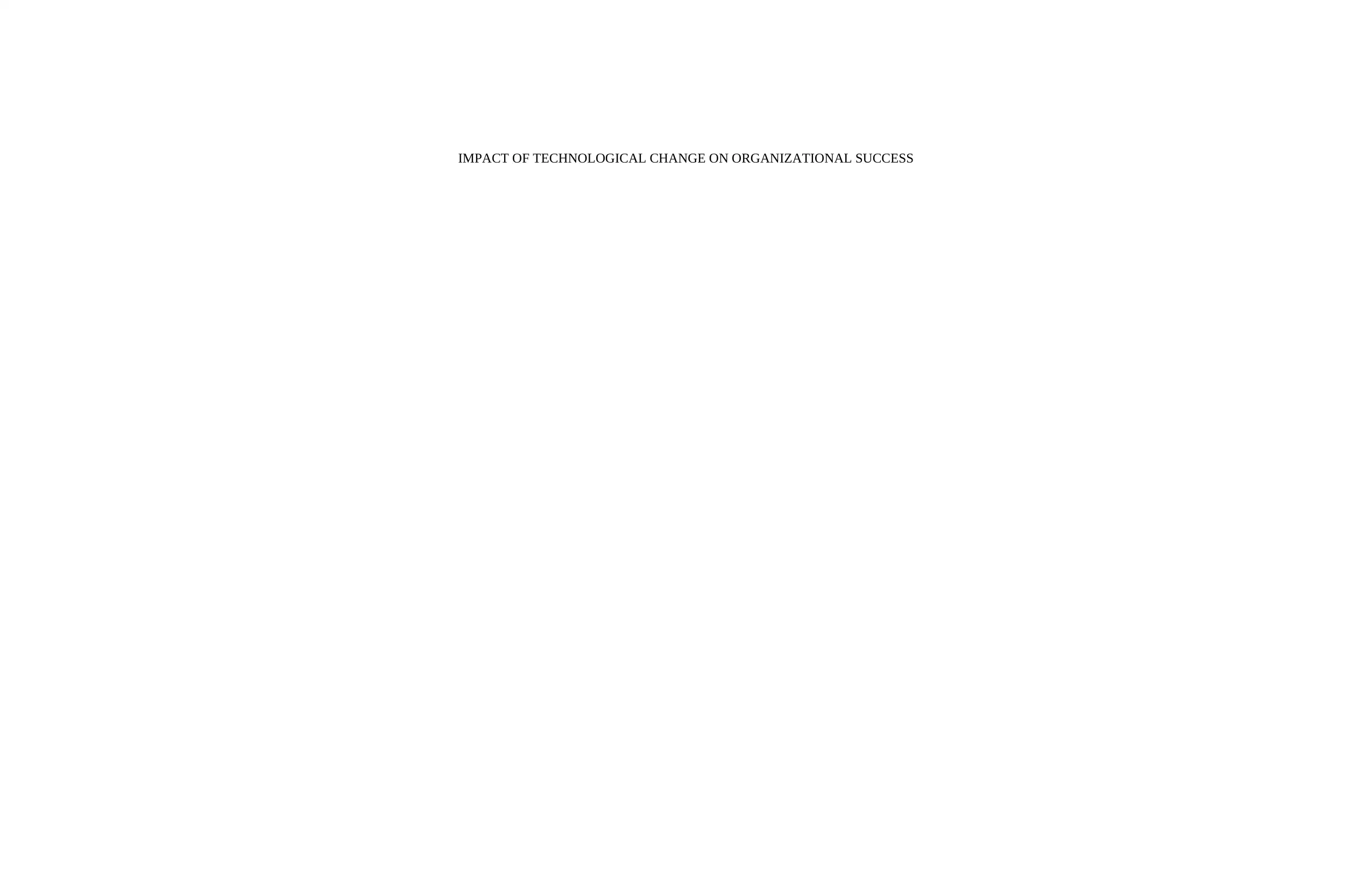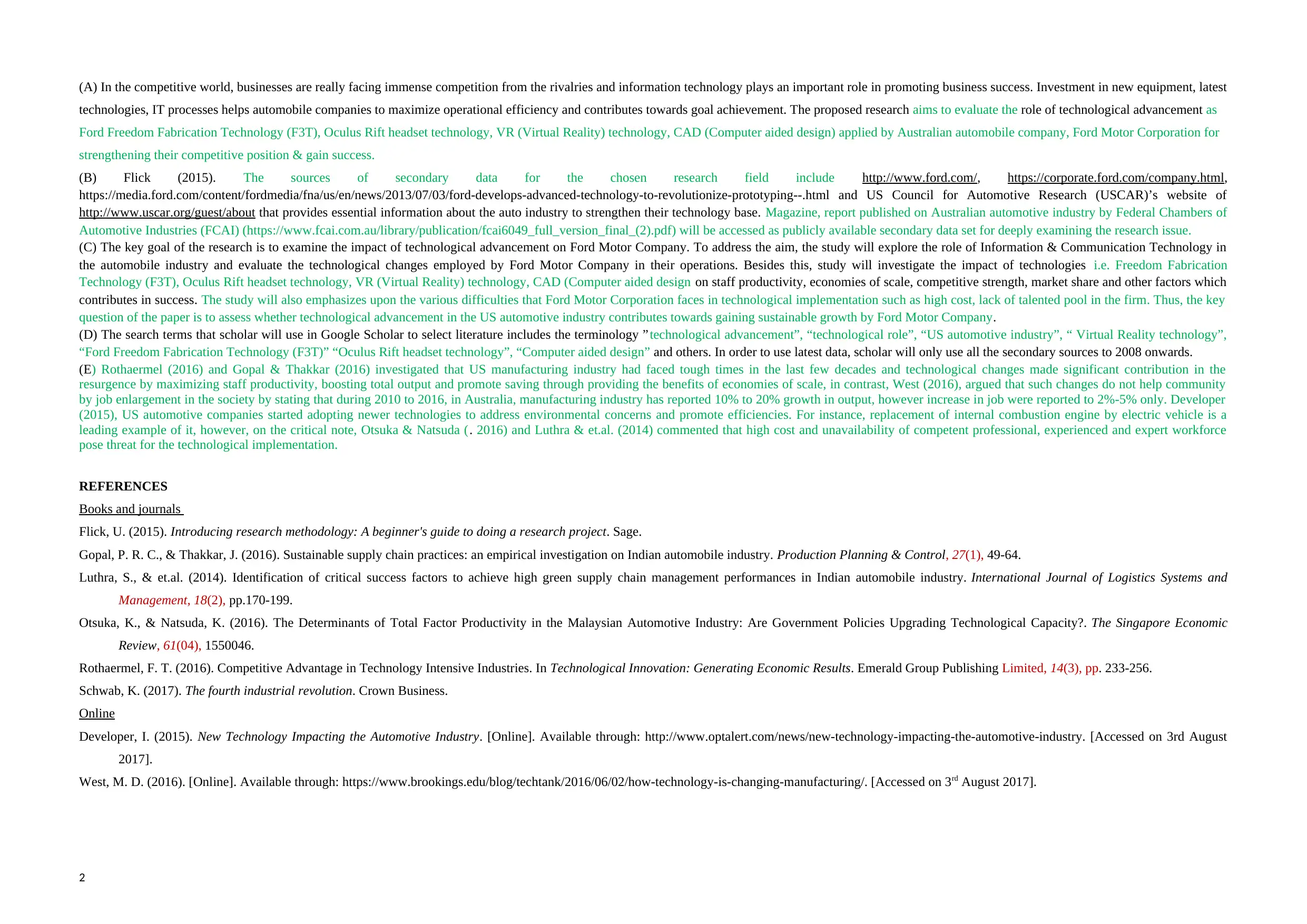Analyzing the Impact of Technological Change on Ford Motor Company
VerifiedAdded on 2020/06/06
|2
|945
|47
Project
AI Summary
This project analyzes the impact of technological advancements on Ford Motor Company's success. The research focuses on the role of information and communication technology in the automobile industry, evaluating technologies such as Ford Freedom Fabrication Technology (F3T), Oculus Rift headset technology, VR technology, and CAD. The study investigates their influence on staff productivity, economies of scale, competitive strength, and market share. The research utilizes secondary data from sources like Ford's website, industry reports, and academic journals to assess the benefits and challenges of technological implementation, including high costs and a skilled workforce shortage. The key question is whether technological advancements contribute to sustainable growth for Ford in the US automotive industry. The project also mentions the use of search terms in Google Scholar to select relevant literature from 2008 onwards.
1 out of 2





![[object Object]](/_next/static/media/star-bottom.7253800d.svg)